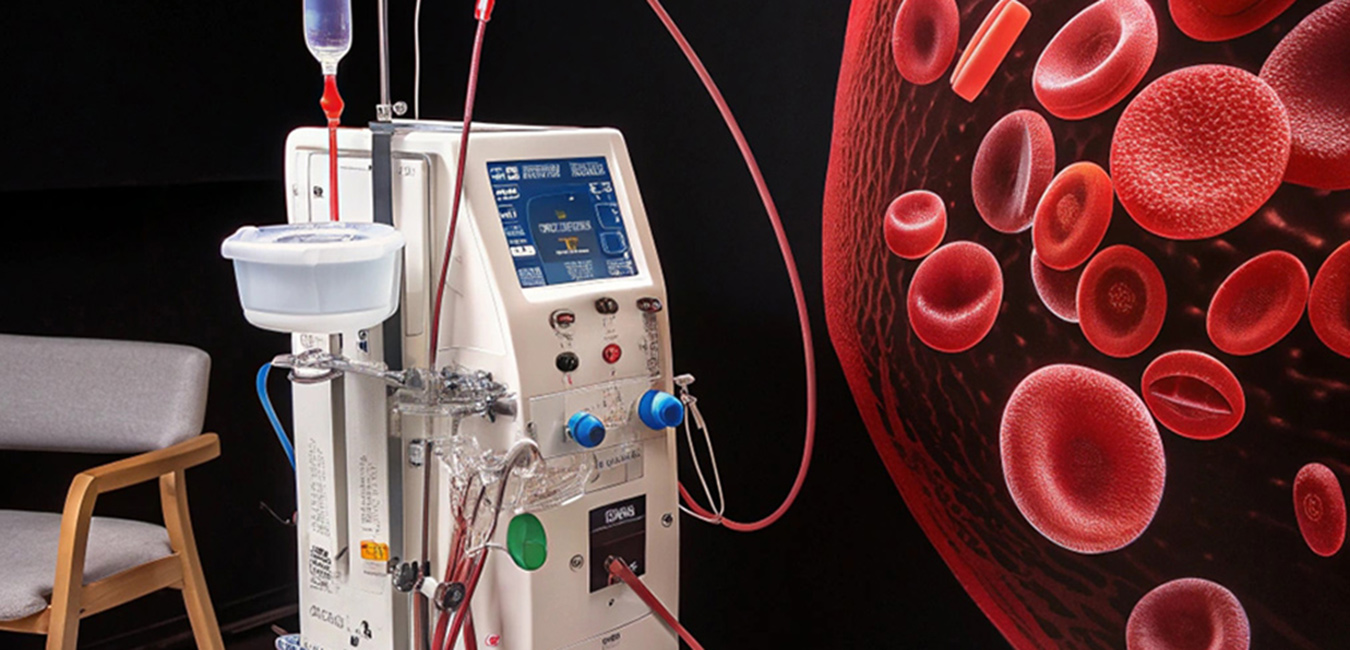
At Celly Mobile Dialysis, we’re dedicated to providing life-saving therapies that support children with complex and critical health needs. One such advanced treatment we offer is Red Blood Cell Exchange (RBCX). A specialized apheresis procedure available exclusively for pediatric patients in our care.
This article provides an overview of what red blood cell exchange is, how it works, when it’s used, and why it’s especially important in pediatric care.
What Is Red Blood Cell Exchange?
Red blood cell exchange, also known as erythrocytapheresis, is a therapeutic procedure in which a patient’s abnormal or diseased red blood cells are removed and replaced with healthy donor red blood cells. The goal is to quickly reduce the percentage of defective red cells in the bloodstream while maintaining stable blood volume and overall health.
RBCX is commonly used for children with sickle cell disease and other conditions where abnormal red blood cells can cause serious complications.
How Does RBCX Work?
RBCX is performed using an apheresis machine. A sophisticated device that separates blood into its individual components (red cells, white cells, plasma, and platelets) and selectively removes or replaces targeted elements.
Here’s a step-by-step look at how the process works:
- Vascular Access: The child is connected to the apheresis machine through a central venous catheter.
- Blood Separation: The machine draws blood from the body and separates out the red blood cells.
- Cell Exchange: Diseased or damaged red blood cells are removed, and healthy donor red blood cells are transfused in their place.
- Return to Circulation: The rest of the blood components (plasma, platelets, white cells) are returned to the patient, helping to maintain normal blood volume and function.
This process is carefully monitored by skilled clinical teams to ensure safety, comfort, and optimal outcomes.
Why Is RBCX Used in Pediatrics?
At Celly Mobile Dialysis, our pediatric red blood cell exchange services focus primarily on children with sickle cell disease (SCD). A genetic disorder that causes red blood cells to become misshapen and sticky, leading to blockages in blood vessels and decreased oxygen delivery to tissues.
RBCX helps by:- Rapidly reducing the number of sickled cells
- Lowering the risk of complications like stroke, acute chest syndrome, and organ damage
- Preventing the recurrence of serious events in children with high-risk SCD profiles
Common Pediatric Conditions Treated with RBCX
While sickle cell disease is one of the most common reasons for pediatric red blood cell exchange, the therapy may also be considered in rare or acute settings such as:
- Severe malaria with high parasitemia
- Hemoglobinopathies other than sickle cell (e.g., thalassemia)
- Autoimmune hemolytic anemia
- Toxic exposures that affect red cell function (e.g., carbon monoxide poisoning)
Our pediatric team evaluates each child individually to determine if RBCX is the appropriate treatment based on diagnosis, symptoms, and overall clinical condition.
What to Expect During the Procedure
For families considering red blood cell exchange, it’s natural to have questions about what the procedure involves and how it may affect their child.
Here’s what parents and caregivers can expect:- Preparation: Your child may need lab tests beforehand to determine blood counts, antibody profiles, and cross-matching for donor units.
- Length: The procedure typically takes 2 to 4 hours, depending on the child’s size and condition.
- Monitoring: Vital signs, oxygen levels, and overall response are closely observed by trained pediatric specialists.
- Recovery: Most children tolerate the procedure well and can resume normal activities shortly after, though fatigue or mild symptoms may occur.
At Celly Mobile Dialysis, we strive to make the experience as comfortable as possible through age-appropriate care, family support, and expert nursing.
Is RBCX Safe for Children?
Yes, when performed by experienced providers like those at Celly Mobile Dialysis, red blood cell exchange is safe and effective for pediatric patients. As with any medical procedure, there are potential risks, such as:
- Allergic reactions to donor blood
- Low calcium levels (from citrate used during the process)
- Temporary low blood pressure
- Iron imbalance over time (though less than with standard transfusions)
Our team works to minimize these risks through careful monitoring, individualized treatment plans, and adherence to national pediatric apheresis guidelines.
Why Choose Celly Mobile Dialysis for Pediatric RBCX?
Celly Mobile Dialysis is proud to be a trusted provider of dialysis and apheresis care for critically ill and chronically managed pediatric patients. When it comes to red blood cell exchange, we offer:
- Expertise in pediatric apheresis
- State-of-the-art equipment
- On-site treatments in hospitals and specialty centers
- Compassionate, child-focused nursing care
- Coordination with your child’s primary specialists and hematology team
We understand that navigating chronic illness can be overwhelming for families. Our goal is to provide high-quality, personalized care that improves your child’s quality of life. Red blood cell exchange is a powerful, targeted treatment that can help manage serious complications in children, especially those with sickle cell disease. At Celly Mobile Dialysis, we are committed to making this advanced therapy accessible, safe, and effective for the patients who need it most.